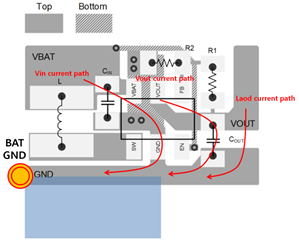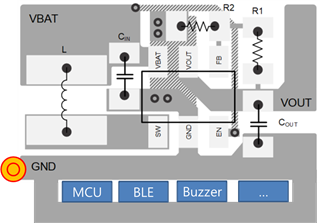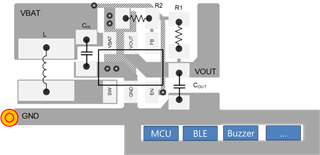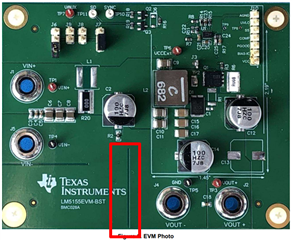Other Parts Discussed in Thread: LM5155
I am working on a design using the TLV61070.
My PCB consists of the regulator, MCU, and amplifying circuit and the only sources of noise are buzzers and microphones.
In my PCB, most of signals are DC. There are a few AC signals, but they are low-frequency, below a few megahertz.
I have a question about how to handle the ground for the regulator.
I have followed the guidelines to minimize the loop formed by SW-COUT-VOUT-GND and have designed the ground plane for the IC itself carefully.
However, I am unsure about whether it would be beneficial to connect the Battery ground (VIN GND) and VOUT GND together and create a ground mesh across the entire PCB.
Alternatively, it would be better to create a ground mesh across the entire PCB by only using the VOUT GND.
Could you please provide some guidance on this?
Regards JH Park






